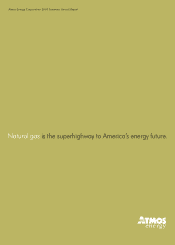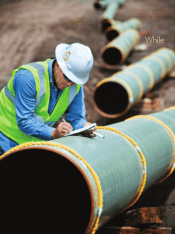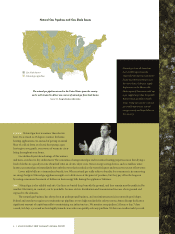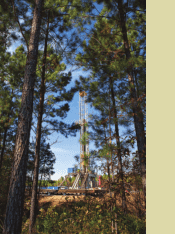Atmos Energy 2009 Annual Report Download - page 11
Download and view the complete annual report
Please find page 11 of the 2009 Atmos Energy annual report below. You can navigate through the pages in the report by either clicking on the pages listed below, or by using the keyword search tool below to find specific information within the annual report.
ATMOS ENERGY 2009 SUMMARY ANNUAL REPORT | 9
Take production costs. Biomass, geothermal, biomass
waste and solar all cost from three to five times more than
natural gas to generate a kilowatt-hour of electricity. A
viable infrastructure to produce renewable energy must be
installed, requiring capital, land, equipment, human exper-
tise and public acceptance. To believe that renewables could
provide the bulk of our energy by even 2040 is unrealistic.
Developers and investors simply can’t ramp up that fast to
meet the expected growth in our energy demand, let alone
control costs to compete in the future world economy.
On the other hand, natural gas is ready today. Gas pro-
duction, transmission and distribution virtually cover the
nation. The infrastructure exists, and new investments are
easily made. We need only to tap the existing system. And,
in doing so, we can dramatically lower greenhouse gases at
a reasonable cost while improving the nation’s balance of
trade and energy security.
Best: One of the first and easiest shifts for the country to
make is to use more compressed natural gas or liquefied
natural gas to run vehicles. Natural gas vehicles can play a
very important role in the nation’s quest for cleaner, stable
energy. Not only are they extremely efficient, but also they
produce nearly a third fewer greenhouse gases than their
petroleum counterparts. And, as Kim noted, we don’t have
to go overseas to get natural gas. More than 98 percent of
the natural gas Americans consume comes from right here
in North America.
Now, everyone can’t run out and convert a personal
car or truck to natural gas tomorrow. But, for companies
and cities with fleets of cars, trucks, buses and utility
vehicles, it’s easy to set up central refueling stations and
begin to make the change. Right here in Dallas, DART
(Dallas Area Rapid Transit Authority) recently changed a
decision to buy new diesel buses in favor of 600 natural gas
buses. Every bus, large truck and large utility vehicle pow-
ered by natural gas saves the equivalent in greenhouse gases
of removing about 325 gasoline vehicles from the streets.
Better air quality and less dependence upon foreign oil are
tremendous benefits for our country and its citizens.
250
200
150
100
50
0
Natural Gas Is the Cleanest Fossil Fuel
Using natural gas with its low carbon-dioxide emissions can dramatically
reduce greenhouse gases that lead to global warming.
Source: U.S. Energy Information Administration
Pounds of carbon-dioxide (CO2) emissions
per million British thermal units (Btu)
Natural gas
Propane
Gasoline
Residual oil
Wood
Coal
























